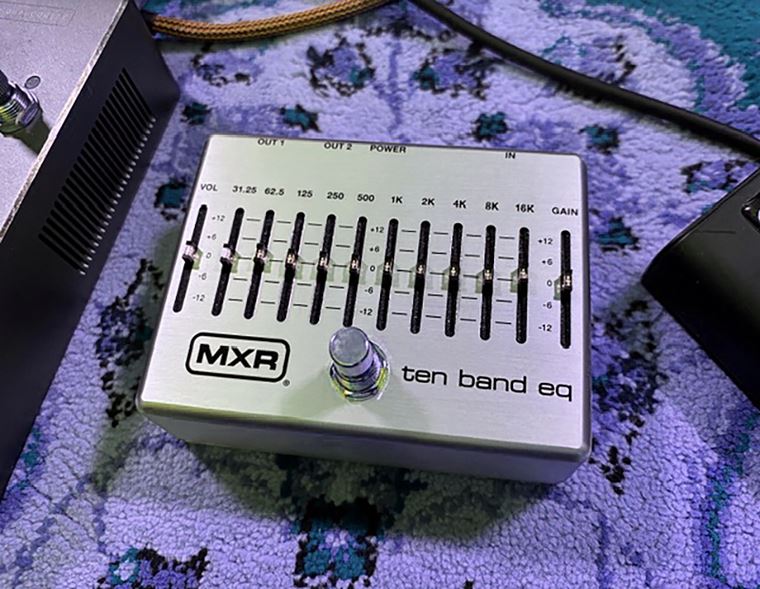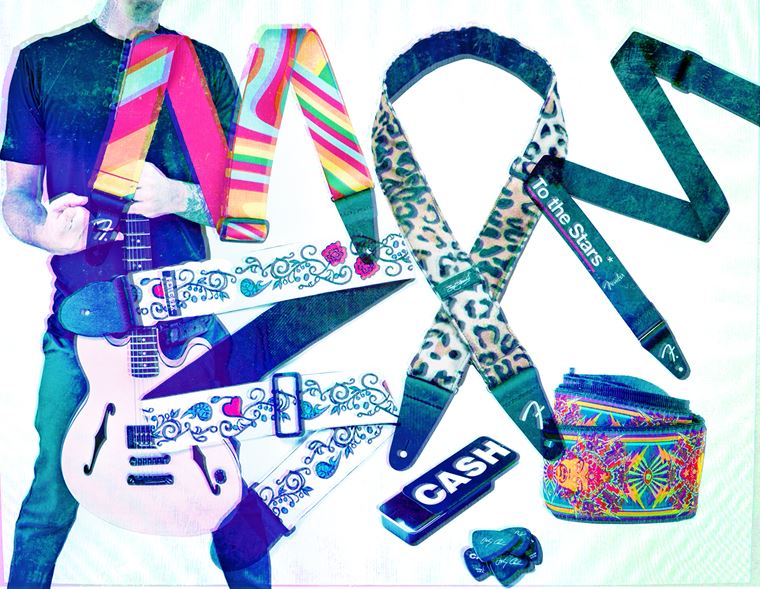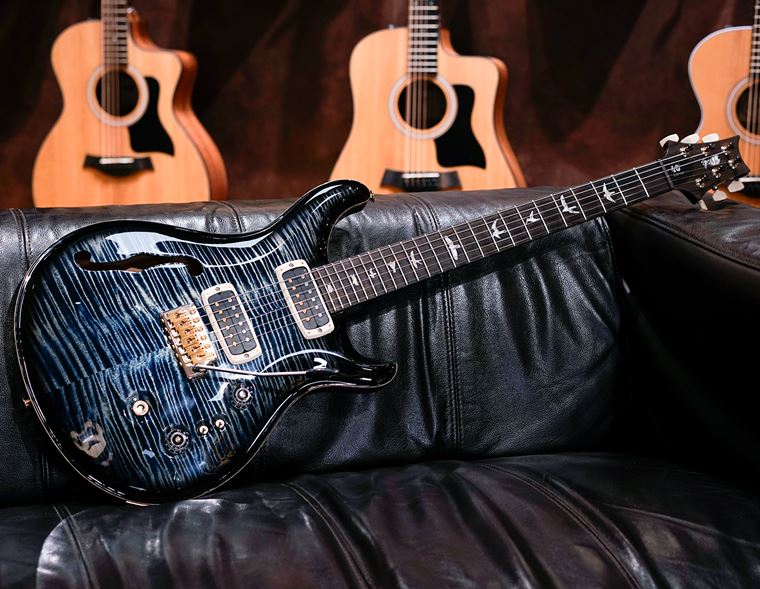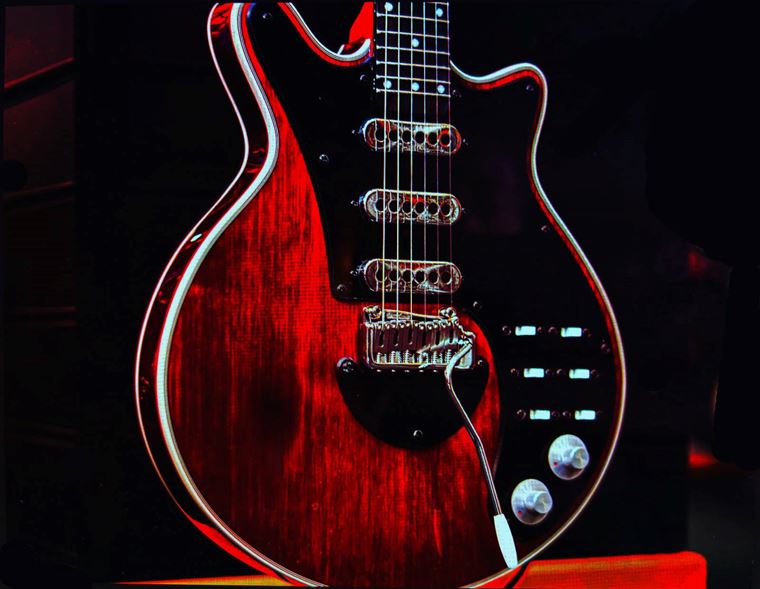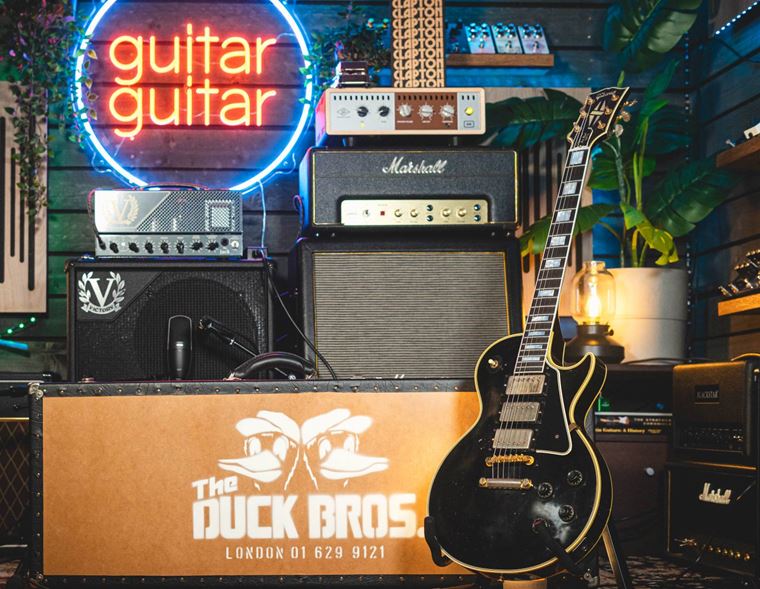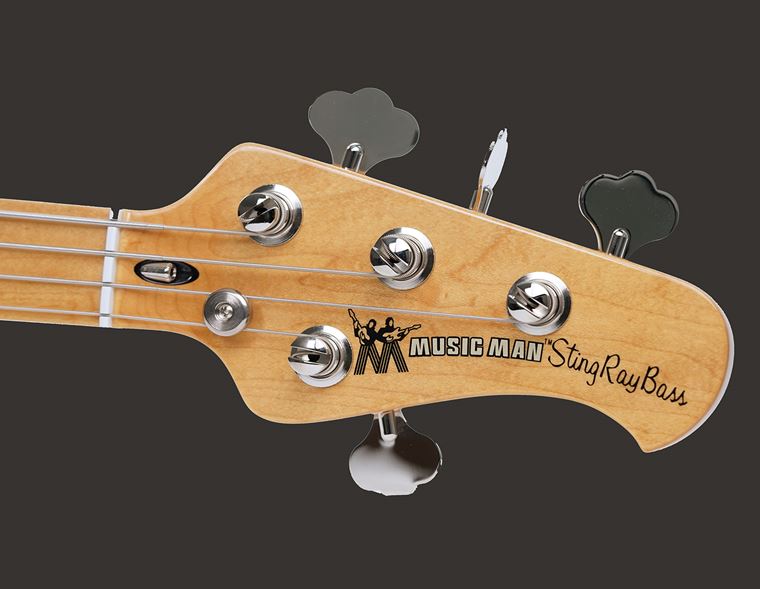Superstrat Shootout: The World's Best Superstrats
Published on 22 November 2024
Are you into superstrats? Do you want to know what’s out there, and how they compare? Or have you heard the term ‘superstrat’ and are unsure about what it even means?
This blog is for everyone who just nodded at any of those sentences.Today is all about superstrats: what they are, how they came about, who they are for and which are, in my opinion, the ones to look out for in today’s market.

Are you ready to learn everything you need to know about superstrats? Okay then!
Contents
What Type of Music is Played on a Superstrat?
Who Made the First Superstrat?
Superstrat Shootout: Top Superstrats
Is it a Bird? Is it a Plane? No, it’s a Superstrat!
What is a Superstrat?
The first point I should make clear is just what the industry means by the term ‘superstrat’. I’m going to assume that you’re familiar with the Fender Stratocaster, because it’s the most famous guitar in the world. Let’s take that as our starting point.
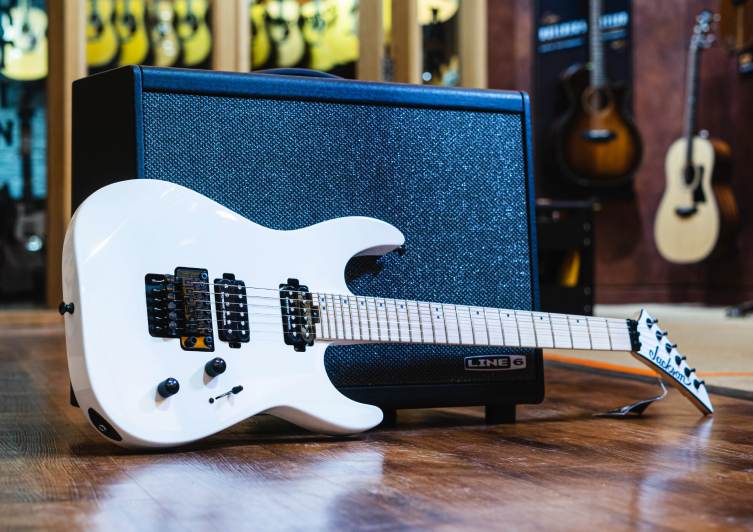
A superstrat is a strat-type guitar (of any brand, not just Fender) with a non-standard pickup configuration and an upgraded tremolo. That would be my definition, but I would also add that superstrats generally have neck specifications that lend themselves to high-performance styles of playing. Superstrat necks will typically have at least a few of the following features:
- Thinner profile (from slim to very skinny indeed)
- Occasionally wider neck (the strings are slightly more separated)
- Extra Jumbo frets (these are both wider and taller than standard frets, so you need less finger pressure to sound a note)
- 22 or 24 frets
- Compound Radius (the curve of the fingerboard gets flatter the higher up the neck it goes, which facilitates fast, technical playing)
Superstrats are all about being louder and faster than a regular Strat, and to that end, they always have at least one humbucking pickup for a hotter tone. There are a few different pickup configurations that pop up on lots of superstrats, so let’s have a quick look at them here:
HSS (Humbucker - single coil - single coil): Like a regular Strat but with a humbucker replacing the bridge position single coil. This is a very versatile setup for players who need to cover lots of bases.

HSH: (Humbucker - single coil - humbucker): Developed by Steve Vai, the HSH configuration offers a more muscular set of sonic combos, whilst still allowing for those out-of-phase tones that funk players love.

HH: (Humbucker - humbucker): Two humbuckers, often with extra switching options available. This is the hardest-rocking configuration.

H: (a single bridge Humbucker): Yes, for an authentic ‘Eddie’ superstrat, you must give up all and any claims to additional pickups, leaving only a single hot, overwound humbucker in the bridge position. Nowhere to run, nowhere to hide!
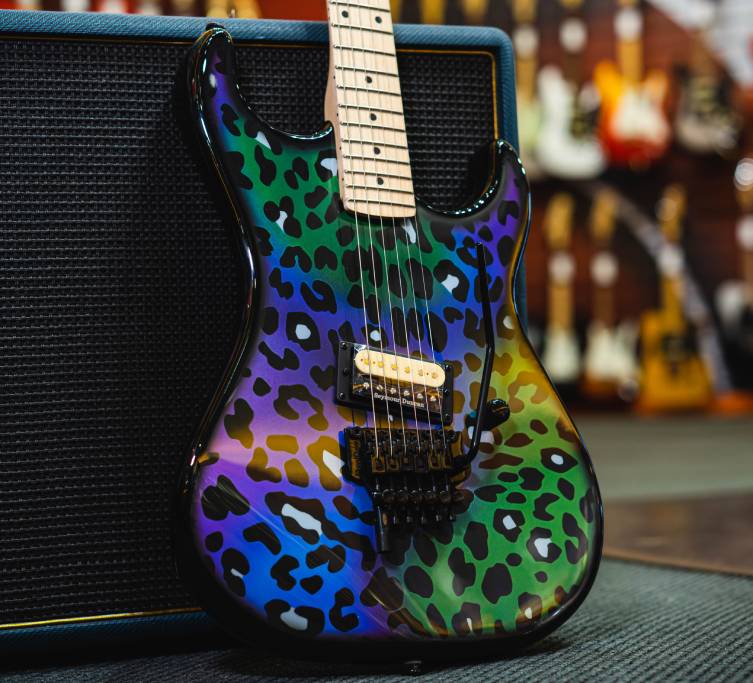
Bridges
Stratocasters already have tremolos, of course. Whatever you call it - whammy bar, vibrato etc - it's something that is an intrinsic part of the design. Following the design brief of Superstrats being generally ‘more’ than regular guitars, though, they tend to have upgraded designs such as Gotoh 510 bridges or, more commonly, a locking Floyd Rose tremolo. The extra expression and potential for wild sound that a ‘Floyd’ brings is an important part of the superstrat DNA.

What Type of Music is Played on a Superstrat?
Superstrats exist because of a desire for more versatility from one instrument. They also exist because of a desire to sound bigger, louder and more expressive, so it’ll come as no surprise that superstrats are to be found in many musical situations. From pop to blues to punk to metal, all guitar-centric musical situations can and do incorporate superstrats, particularly the models that adhere more closely to Fender’s original visual blueprint.
Once the pointed headstocks and jagged inlays get involved, there’s more of an obvious slant towards heavier styles, but otherwise, all types of music are played on superstrats.
Who Made the First Superstrat?
Common consensus agrees that a young Dutch-American named Edward Van Halen unwittingly created the first superstrat in the late Seventies. The lore for this can fill up pages, so let me keep it brief: Eddie bought a neck and a body from a company called Boogie Bodies (there are links there to a host of major Californian brands like Schecter, Charvel, Jackson and more but that’s a story for another day), whapped out the humbucker from an old Gibson ES335 that he had lying around (sacrilege) and stuck that into his bits-and-pieces guitar. This has since made history and become known as ‘Frankenstein’, ‘Frankie’ or the ‘Frankenstrat’, for reasons that are no doubt obvious.

By the early 80s, Eddie was probably the most exciting & imitated rock guitarist in the world, and everyone wanted a hot-rodded Strat. He was an early user of the Floyd Rose tremolo too, so that became part of the superstrat blueprint soon enough. The rest of the decade was filled with such guitars from all of the companies I just mentioned above, plus BC Rich, Kramer and a ton more. Everyone had to have one.
So there you have it: Eddie Van Halen invented the superstrat.
Superstrat Shootout: Top Superstrats
Let me now show you some superstrats that are available today. Whilst I’m calling this a shootout, I should also clarify that I’ve only opted for guitars that I already feel are excellent, so they are all worthy choices. Also, the prices will vary wildly, and it’s hardly fair to compare a £350 guitar with one that’s priced at £3500, so I’ve not done that.
This shootout is more about choosing the best that you can afford, so consider these contenders today as the last-fighters-standing in an epic battle. These are all winners.
Charvel Pro Mod So Cal Style 1
Charvel were one of the original superstrat brands, and continue to make very 80s-faithful axes with licensed Fender body and headstock shapes. The naming conventions for Charvel are a bit convoluted, but this one breaks down like this:
- Pro Mod: the name of the overall range, made in Mexico.
- So Cal: short for Southern California but here only means that the guitar has a pickguard. (San Dimas variants are very similar but come sans pickguard)
- Style 1: this denotes a Strat body. Style 2 is Tele-shaped, and so on.
Charvel’s Pro Mod guitars are seriously hard to beat for the cash. The necks are famously agreeable, with a wonderful ‘unfinished’ feel (it does have an oil finish), big frets and a compound radius fingerboard. The rest of the high spec includes USA-made Seymour Duncan humbuckers, a high quality Floyd Rose trem (all Floyds are NOT made equal, beware!) and other cool features like custom switching, coil taps and a ‘no load’ tone control that preserves more of your signal than a standard one.
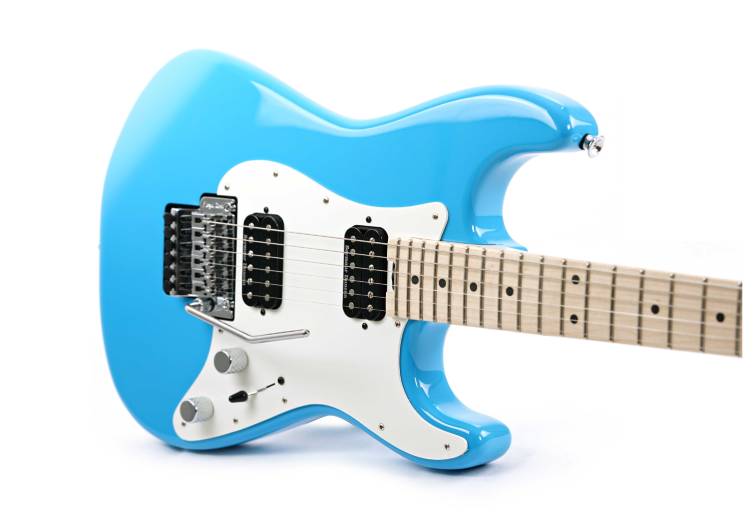
Charvels perform very impressively indeed, they look authentically iconic as 80s superstrats and are priced very competitively considering what you get. I honestly believe these to be as good as many guitars that cost twice as much, so I invite you to make your Charvel your first stop when investigating superstrats.

Ibanez JEM 77P Blue Floral
Ibanez are another titan of the superstrat, thanks to top players like Joe Satriani and Steve Vai making their names in the 80s with Ibanez guitars.
My first notion here was to select an Ibanez RG (stands for Rock Guitar of course) since those are the definitive Ibanez superstrats, but the fact is, the RG itself was a somewhat ‘mainstreamed’ take on Vai’s eccentric JEM, which is, if anything, even more iconic. It’s never been out of production either, and has existed in such a rainbow of finishes over the years that there are many dedicated JEM collectors who’ve made a whole sub-market out of chasing rare models.
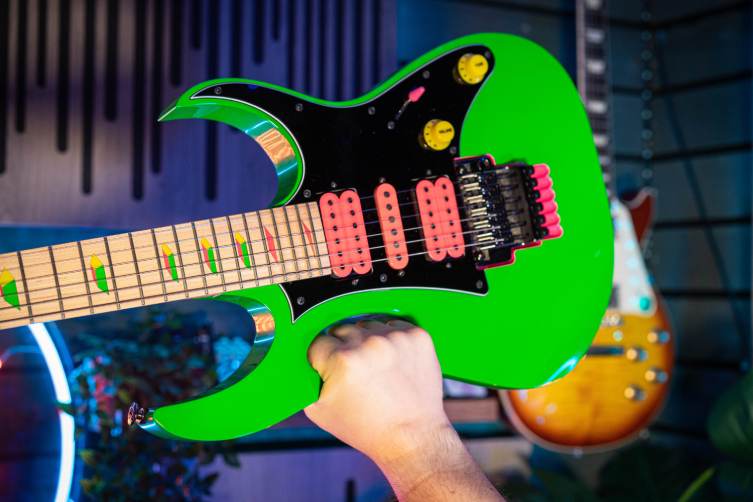
So, the JEM it is, and there are a few currently on offer from under £500 to over £2000. I wanted to show off a little of the more flamboyant side of the Superstrat world here, so I’ve opted for the excellent Ibanez JEM 77 Blue Floral model. Vai has a running theme of floral finish JEMs, with the first of these actually having curtain material underneath the lacquer! (Read more about that in this recent exclusive interview I conducted with Steve Vai on the genesis of the JEM)
This gorgeous Premium range blue floral JEM has all of the wonderful hallmarks you’d hope to find on a Vai guitar: the Tree of Life inlay (blue over a maple neck here), the Monkey Grip cutout in the body, the Lion’s Claw routing behind the tremolo (this allows insane levels of upwards bend with the whammy bar) and a set of Steve’s signature DiMarzio pickups.
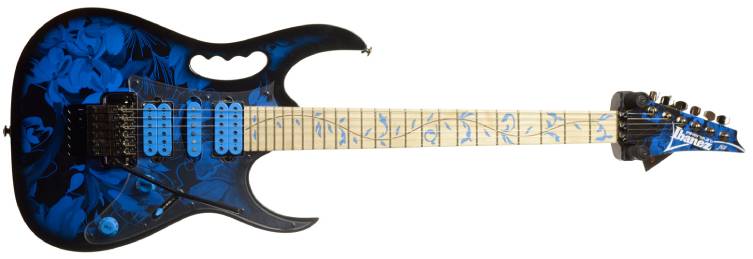
I’ll level with you: owning a JEM will not instantly make you play like Steve, okay? But it’s also fair to say that there’s no guitar out there more capable of getting you close to his style, since there are aspects to his technique that would be hard (or impossible) to accomplish on other guitars.
Whether you’re a Vai fanatic or not, this JEM is an ostentatious, very fun and very capable superstrat.
EVH Frankie Road Worn
The EVH brand was Eddie Van Halen’s own personal guitar, amp and accessory company. As a sub brand of Fender, it continues today, making his Wolfgang guitars, 5150 amps and other Van Halen-related pieces of equipment.
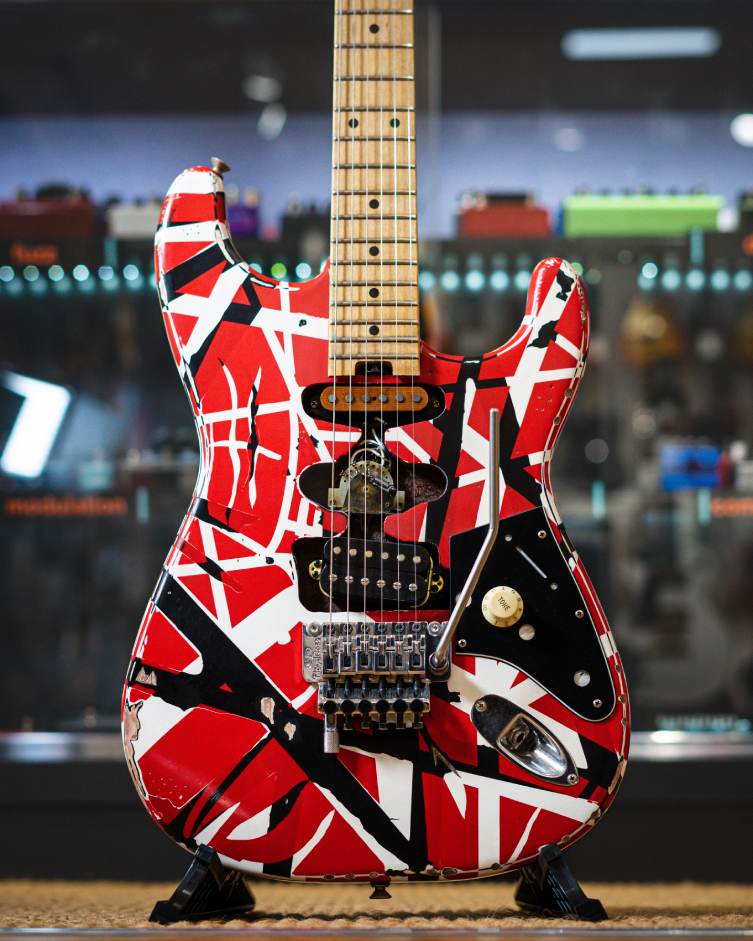
Coolest of all must be this relatively affordable take on Ed’s own Frankenstein guitar! Whilst not a slavish, painstakingly identical replica, it’s still plenty close to the original superstrat. The Frankenstein guitar is a very charismatic instrument, and this EVH Frankie captures tons of those cool idiosyncrasies:
- The fake neck pickup: this has only one pickup, just as Ed wanted
- The broken pickguard
- Exposed electronics
- A single control for volume that reads ‘tone’ (Eddie quote: “Volume IS tone”)
- Authentic striped finish
- Good quality ageing
- Proper Wolfgang pickup
EVH have stopped short of adding the crusty old dime that Eddie glued to the body, or the bicycle reflectors he stuck on the back, but I feel like that’s an easy bunch of modifications to carry out if you ever felt like going ‘full Ed’. It’s a classy tribute to the greatest superstrat of them all, and it's within the reach of many players, price wise, which I think is pretty awesome.
Jackson American Virtuoso
Jackson epitomise the 80s shred scene more than any other brand: the body shapes, the distinctive pointed headstock, the sharkfin fingerboard inlays…Jackson owned that vibe like no other brand. What’s cool to note is that all of those things have since become somewhat timeless and certainly iconic. Generation after generation of hard rockers have adopted Jackson as their own, and utilised designs like the Soloist and the Dinky in forms that are largely unchanged from their initial releases.

It’s a Dinky I’ve chosen today, in the form of the Jackson American Virtuoso. The name says it all, really: this is a machine made for high-performance, and it bears all of those much-cherished Jackon hallmarks that I mentioned, apart from the sharkfins. It’s certainly a looker, and its overt ‘metalness’ is neatly subverted with the pastel-hued ‘Specific Ocean’ finish shown here, though you can get in in more traditionally mosh-friendly colours, too.
The real selling point here is the fact of it being an American-made Jackson. For many years, such a thing has not been available, so to be able to own a Californian Jackson guitar is an important thing for many fans.

It doesn’t disappoint, either. The caramelised maple neck is typical Jackson - beautiful in the hand - and the fingerboard is ebony for a smooth feel and classy look. As it happens, my personal favourite pairing of Seymour Duncan pickups have been chosen for this guitar: the JB and the ‘59. I don’t think it gets much better than those for ultra-expressive technical playing.
Add in a top drawer Floyd Rose tremolo and a feel that is just satisfying as hell, and you’ve got a seriously cool and very ‘able’ guitar in your hands.
Schecter Aaron Marshall AM-6
Here’s a superstrat that’s more contemporary in its aesthetic. Aaron Marshall is a modern day shredder from the band Intervals, and his guitar needs are met by Schecter, who as I mentioned previously, are another of the original USA boutique guitar brands.

Most of their instruments - like this AM-6 - are not made in the States, but their commitment to unique, original guitars remains throughout their catalogue. This fresh and understated superstrat - shown here in Arctic Jade - doesn’t stray too far from the superstrat blueprint that we’ve seen, but still manages to have its own tasteful & ergonomic look.
There’s a carbon reinforced neck (something the Charvel also features) for long term stability, and top quality hardware from Gotoh and Hipshot. Marshall has opted for a vintage style tremolo over the locking variety, which is still probably enough for most players in terms of operation. A pair of USA-made Schecter pickups provide ample firepower, and serve to remind me that Schecter’s own pickups can compete with any ‘name brand’ units out there.

Suhr Modern Plus
John Suhr is a bit of a guitar making legend. From his days with Pensa-Suhr in New York to his time as a Fender Custom Shop Master Builder, he’s learned and practised everything there is to know on the craft of building exceptional guitars.

Suhr is his own brand, and the Modern is Suhr’s take on the superstrat. Featuring a slightly offset body shape, the Suhr Modern Plus has a gorgeous figured maple top, finished in a range of beautiful translucent colours such as Faded Whale Blue Burst. This instantly elevates the whole vibe of the instrument into that rarefied boutique category: the natural binding and wonderful finishing are a cut above.
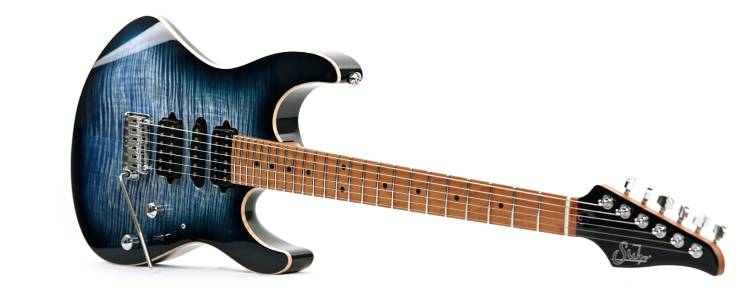
On top of that, the design utilises the H-S-H pickup configuration we encountered earlier, and also opts for a Gotoh bridge that’s modern but more akin to the Fender design than the locking Floyd Rose.
There’s nothing this guitar can’t do, and do with supreme results. If you can afford this, it’s essential that you give it a very thorough demo. It’s worth every penny.

James Tyler Studio Elite
Some say that the late, great James Tyler built the very best S-types on the market. As somebody who has been lucky enough to get his hands on a good few to try out, I’m not lining up to disagree! Whilst obviously an acquired taste looks-wise (I’ve yet to meet anyone who is on the fence about the appearance of these guitars), their ability as instruments is beyond question.

A builder for many of the 80s’ top session guys, Tyler created, in the Studio Elite, an instrument that covered every base, with pickup options and the innovative mid-boost preamp all built into a top quality guitar that felt like heaven to play. The guitars stand out because of their Shmear and Burning Water finishes (no, they won’t say how they do it), but their reputation is firmly based on how they feel, perform and sound.
Whether you try one of the Japanese Tylers (James was hugely picky about who he trained to build guitars, and it shows) or one from Los Angeles, you’ll be experiencing guitar building at its finest.

Is it a Bird? Is it a Plane? No, it’s a Superstrat!
Superstrats have been perennially popular since the day Eddie took a chisel to his poor ES335 and made like Mary Shelley. His Frankenstein is alive and well in many ways: you can buy a replica (see above), and you can see its influence in offerings by almost every major guitar brand out there.
You have almost definitely played a Superstrat, and if not, you most certainly will in the future. They have become an essential tool in every guitarist’s guitarmoury, and with good reason: what can’t they do? Whether you like subtle, like Aaron Marshall, eccentric like Steve Vai or full-on crazy like James Tyler, your tastes will be met by a number of awesome gunslinging superstrats out there.
Take my list today as a starting point for your own adventures, and remember to have fun as you play your way through the world of superstrats!



